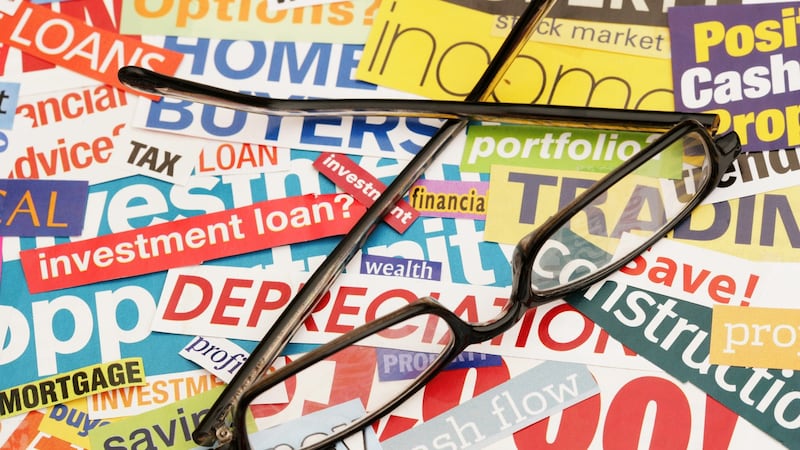It's a sign of growth, of economic activity driving inflation which, in turn, must be tempered by higher interest rates. But as the hawks start to circle on both sides of the Atlantic, the risks for Irish consumers are clear: higher rates could bring with them higher risks for the economy.
The European Central Bank (ECB) has been pushing inflation for the past few years, and finally it appears to have started to pay off.
“It does look like rates have bottomed,” says Alan McQuaid, economist with Merrion Capital, but adds that rates will probably start to increase slowly. But nonetheless, “consumers should be adjusting,” he says.
As Cliff Taylor wrote last week, the one lesson for Irish consumers arising from the Fed’s recent increase in interest rates in the US is just how quickly expectations in the market can change.
So while analysts don’t foresee an increase in the ECB’s base rate, currently zero, until 2018 at the earliest or most likely until 2019, this could change – and fast.
And with “normal” market rates of 3-4 per cent expected, when rates do start to rise, the impact on Irish consumers will be harsh.
As McQuaid notes, Irish consumers are “particularly vulnerable” to an interest rate hike.
“Given that we have a lot of outstanding debt, we are vulnerable to a shock,” he says, adding that a sharp rise in rates could increase the risk of a serious downturn or, at worst, another recession.
“It’s clearly a negative for us, and it will certainly dampen consumer spending,” he adds. “We need another three to five years of steady low rates.”
After all, two things are clear: firstly, given that the cost of borrowing is already significantly higher for Irish consumers than it is for their counterparts across Europe, any upward hike in rates will likely hurt Irish consumers considerably more.
And secondly, any upward hike in rates will also hit a specific cohort of borrowers – those aged between 35-54 who bought property during the boom years and still have significant chunks of debt relative to their income – harder than others.
So what would your finances look like if rates were to suddenly jump to 3 per cent?
Your savings
Let’s start with on a positive note. Currently, you’re probably earning 0.6 per cent at best – and 0.01 per cent at worst – on any lump sums you might have.
While negative pressures are still exerting an influence – AIB, for example, last week cut the interest it pays on some accounts to just 0.01 per cent, while Bank of Ireland has cut its demand deposit account to zero – if interest rates do start to rise, savers should start to feel the benefit first.
Over a year, this means you’ll earn between €1 and €60 on a deposit of €10,000. And you’ll have to pay Dirt on those meagre returns too.
Tacking another three percentage points onto rates which are already way above market could be simply too much for some people to handle
If interest rates jumped to 3 per cent, however, you could expect to earn in the order of about 3.6 per cent on your deposits, provided that banks price their deposits on a similar basis to now.
This means that on a lump sum of €10,000, you would then stand to earn €366 a year in interest, while regular savings accounts could offer returns of as much as 6 per cent.
Your mortgage
Yes, the Irish are currently paying too much for their mortgages compared with European norms. However, it seems at least that people can afford it at current rates. But if rates should rise sharply, what then? Tacking another three percentage points onto rates which are already way above market could be simply too much for some people to handle.
As Rachel McGovern, chief operations officer at broker body Piba notes, the current situation means that Irish consumers are exposed to interest rates almost double those of their European counterparts.
So, while a three-percentage-point hike in rates might see a homeowner in France start to pay 5 per cent on their home loan, here in Ireland we will be paying up to 7 per cent – and that is only if the bank passes on the ECB hikes directly, and no more.
As has been shown in recent years, given the disparity in rates in Ireland and across Europe, variable rates no longer track ECB rates. This means that banks could send mortgage rates even higher.
While banks’ ability to do this may be muted by the forthcoming Fianna Fáil bill on mortgage rates, a lot remains to be seen, so the risks are clear.
Consider someone with a €300,000 mortgage over 30 years. Currently paying €1,011 a month in repayments, the cost of this mortgage could jump to €1,288 if mortgage rates rise to 5 per cent, and to €1,761 if rates were to rise to 8 per cent.

Given that Central Bank figures show that some 300,000 households, or €100 billion in household debt, are on a variable rate, it is easy to see just how significant the impact of higher rates could be. While some €55 billion of this could be cushioned from the full force of higher rates by virtue of being on a low-cost tracker, the remaining €45 billion are on standard variable rate mortgages – which could be hiked upwards at the whim of the banks.
No surprise, then, that the Central Bank warned last year that the high level of debt held by the household sector “leaves the sector vulnerable to the effects of an income shock or increases in interest rates”.
House prices
If the cost of financing a property purchase increases, logic would suggest that the amount then that people can pay for a home will fall, which in turn would also suggest that house prices must also fall.
“House prices might come down, and it might dampen the building sector,” McQuaid says of a potential three-percentage-point hike in rates.
Indeed, a sharp rise in interest rates could dampen house price growth, making it more expensive for homeowners to service their mortgage, and therefore impacting on affordability.
Banks currently apply a stress test of an increase of about three percentage points in rates when approving people for a mortgage – but if rates were another three percentage points higher, this could make it more difficult for people to borrow to get a home.
Recent Daft.ie reports have illustrated that it's cheaper to buy than rent in most parts of the State – but what if interest rates were to jump by three percentage points?
“We’ll have to see whether banks will be willing to lend more freely with rates going up,” notes McQuaid.
Property investors, who are slowly coming back to the market with buy-to-let mortgages, may also find it less attractive if the cost of borrowing rises, further dampening demand.
Rate hikes may also swing the dial back in favour of renting. Recent Daft.ie reports have illustrated that it’s cheaper to buy than rent in most parts of the State – but what if interest rates were to jump by three percentage points?

Well, if you’re looking to rent a three-bed house in Dublin 18, you would be facing rent of about €`1,858 a month; if you were to buy the property, it would cost you just €1,665 to service a 30-year mortgage on the property.
However, if rates rose by two percentage points, suddenly it’s cheaper to rent than pay €2,098 a month to service the mortgage. And if rates rose by three percentage points, the mortgage repayment would rocket to €2,332 a month.
If more people opted to rent, rather than buy, it would put further pressure on rents, and therefore could exert them upwards.
Consumer debt
We “tasted and tested” too much during the boom and have yet to pay it all back. The Irish still have very high levels of consumer debt by European standards, at €31,096 per head.
This ranks us fourth among the most indebted states across the European Union – behind Denmark, Sweden and the Netherlands – and therefore particularly vulnerable to any interest rate shocks.
The good news is that household debt is falling. It fell to its lowest level in a decade during 2016, and the debt-to-income ratio, an indicator of debt sustainability, is now down at 145 per cent, having peaked at some 215 per cent back in 2011.
“It’s quite clear that people are still opposed to taking out loans, as they’re still paying back debt,” notes McQuaid.
The biggest shock might be directed at those in the 34-44 age group, who most likely paid over the odds for their properties during the boom
But this means that Ireland’s level of consumer debt is still very high – and therefore more vulnerable to an interest rate shock, as, when rates rise, so too will the cost of servicing debt.
And the biggest shock might be directed at those in the 34-44 age group, who most likely paid over the odds for their properties during the boom, and, still weighed down by hefty debt burdens and possible negative equity, are likely to be hit the hardest.
Figures from the Central Bank show that when it comes to measuring outstanding debt, as a proportion of a person’s income, those in the 35-44 age group carry the greatest burden, with a debt/income ratio (the ratio between their debt and their households) of the order of 200 per cent – significantly higher than the aforementioned average of 145 per cent.
They also have the greatest burden in meeting their monthly repayments. According to data from the Central Bank, the ratio for this age group is 17.5, which means that almost 18 per cent of their monthly income goes on servicing debt, compared with just 9 per cent for the over-65s and 15 per cent for the under-35s.
For first-time buyers, McGovern says a potential hike in rates is worrying, as they will have lost out on buying at the bottom of the market and are also losing out on getting the best interest rates that they should be entitled to get.
“This will leave a financial legacy that they may not be able to recover from,” she says.












